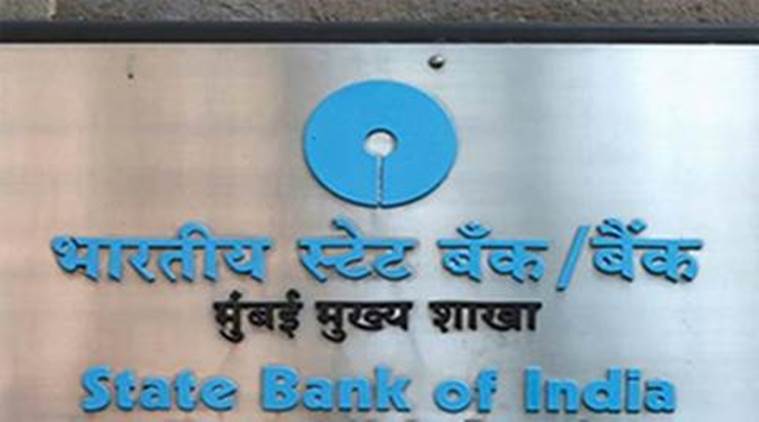Banks cut interest rates on savings bank accounts: All you need to know
"The decline in the rate of inflation and high real interest rates are the primary considerations warranting a revision in the rate of interest on savings bank deposits," State Bank of India said.

State Bank of India, the largest lender in the country, was the first to cut interest rates on savings bank accounts on July 31. Six more banks followed suit. The bank gave dropping inflation and high real interest rates as the prime considerations for the decision. (File photo)
A number of public and private banks in the country have cut interest rates on savings bank accounts. The move started with the country’s largest lender State Bank of India slashing interest rates on savings bank accounts from 4% to 3.5% per annum. True to expectation, others followed and till now seven banks have slashed rates.
After cutting the rates, SBI had explained in a statement: “The decline in the rate of inflation and high real interest rates are the primary considerations warranting a revision in the rate of interest on savings bank deposits,” adding that the bank had reduced the marginal cost of funds-based lending rate by 90 basis points from the turn of 2017 on account of huge inflow of money in savings and current accounts due to demonetisation. Real interest rate plays a key part here as it is the interest that you actually receive after adjusting retail inflation. Due to the drop in inflation, the real interest increased substantially in the past after inflation dropped to a record low of 1.54% in June. This seemed to lay the ground for the rate cut.
How have the rate cuts progressed?
State Bank of India (SBI): SBI announced rate cut on July 31 on savings bank accounts by 50 basis points effectively reducing the rate from 4% to 3.5% per annum on deposits up to Rs 1 crore. The rate offered on deposits above Rs 1 crore remains at 4%. .
Bank of Baroda: The second bank to cut rates was Bank of Baroda. It shifted to a two-tier savings bank interest rate as well. The rate offered on deposits up to Rs 50 lakh was cut from 4% to 3.5%. The rate above Rs 50 lakh was not changed.
Axis Bank: The first private bank to follow SBI’s move was Axis Bank. The numbers of rate cut, rate offered and applicable deposit limits were the same as Bank of Baroda.
Indian Bank: The PSU lender said in a regulatory filing at the BSE that it “has introduced two tier interest rate structure for saving bank accounts and will offer 4 per cent interest per annum for incremental balance over Rs. 50 lakh and 3.50 per cent per annum for balance up to Rs. 50 lakh”. The change was brought into force from August 16.
Karnataka Bank: The changes were linked to daily balances. If the daily balance were to be below Rs 1 lakh, the rate offered by the bank is now only 3%, a change from the earlier 4%. If the daily balance remains over Rs 1 lakh to a maximum Rs 50 lakh, the bank reduced rates from 4% to 3.5%. The bank offers 4% interest on daily balance between Rs 50 lakh and Rs 1 crore. And a positive change seen was the revised rate of 5% per annum from the earlier 4% on daily balances over Rs 1 crore.
Yes Bank: The private sector bank reduced the interest on savings accounts with balance of Rs 1 lakh or less from 6% to 5%. However, the 6% rate will remain for the over Rs 1 lakh to below Rs 1 crore deposit bracket. For deposits of or above Rs 1 crore, the bank has reduced the interest rate from 6.5% to 6.25%.
HDFC Bank: One of the biggest lenders in the country, HDFC slashed rates for savings bank account balance below Rs 50 lakh to 3.5% per year. The 4% rate will continue for deposits of and above Rs 50 lakh. The change will come into force from August 19, 2017. Also, it will be applicable on resident as well as non-resident account holders.
The Reserve Bank of India had deregulated interest rates on savings bank accounts in October 2011. Now, banks are at a liberty to set rates of their choosing as they seem proper. Banks with higher market share and older presence had maintained interest rates of around 4%. The relatively newer banks or those that were attempting to make inroads to gain market share had offered higher rates of 6-7% like Kotak Mahindra Bank and Yes Bank.
The daily calculation of interest offered on savings was also started in 2010. Earlier, the banks gave interests on least amount of balance in a savings account between the 10th and the last day of each month. It was eventually replaced as it was deemed unfair to customers



 →
→











0 comments:
Post a Comment